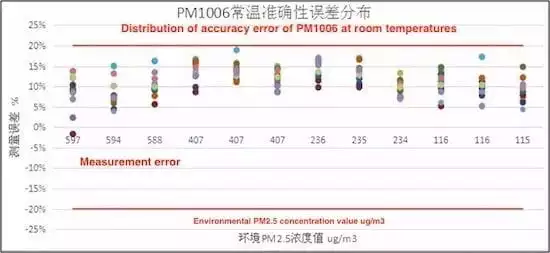Sources of indoor dust particles
Studies have found that various living and office activities such as housework, walking, cooking, smoking, printing, and copying will increase the concentration of indoor dust particles. Various microorganisms that breed from people, pets, the surface of various indoor building materials, and the indoor environment are also sources of indoor particulate matter.
1) In the cooking process, 4.1±1.6mg of inhalable particulate matter is produced per minute, of which PM2.5 accounts for about 40%, and the amount is 1.7±0.6mg. The particle size of most of the particulate matter generated by cooking is below 0.5μm.
2) The particles released by burning cigarettes in offices and other environments account for about 50% to 80% of indoor particles, and as high as 80% to 90% in meeting rooms and lounges. Cigarette burning can release 1.67mg of fine particles per minute, of which the weighted incidence rate of particles with a diameter of less than 2.5μm is 0.99mg/min, and the counted incidence rate of particles below 1μm is 1.92×1011/min.
3) The chemical reaction between indoor pollutants such as ozone and terpenes will also produce new particles, which will increase the concentration of indoor particles by about 2.5 to 5.5μg/m3.

Table 1 Indoor pollutants, sources and particle sizes
The necessity of dust detection
After the dust enters the human body through the respiratory system, the part where it is deposited on the human body is determined by the particle size of the particle. The smaller the particle size is, the deeper the part that enters the human body becomes. Coarse particles of 2.5 to10μm are deposited in the upper respiratory system such as the throat and trachea. Fine particles of 1 to 2.5μm are deposited in the lower respiratory system such as the bronchi; finer particles of 0.1 to 1μm can enter the human lungs, and ultrafine particles smaller than 0.1μm can directly penetrate the alveoli and enter the human blood circulation system, thereby affecting the health of vital organs such as the human heart and brain.
In addition, the smaller the particle size is, the larger the corresponding number concentration and total surface area become. Relatively speaking, the surface can absorb more toxic and harmful organic pollutants (for example, polycyclic aromatic hydrocarbons), acid oxides, heavy metals, viruses and fungi. The smaller the particle size of the particulate matter is, the greater its harm to human health.
The prevention and control of dust particles are mainly divided into two aspects: detection and treatment. Only when the effective detection of environmental dust is realized can the treatment plan be implemented in a targeted manner to improve people's living and working environment and keep away from the harm of air pollution particles. PM2.5 sensors can be used to detect dust.
Studies have found that various living and office activities such as housework, walking, cooking, smoking, printing, and copying will increase the concentration of indoor dust particles. Various microorganisms that breed from people, pets, the surface of various indoor building materials, and the indoor environment are also sources of indoor particulate matter.
1) In the cooking process, 4.1±1.6mg of inhalable particulate matter is produced per minute, of which PM2.5 accounts for about 40%, and the amount is 1.7±0.6mg. The particle size of most of the particulate matter generated by cooking is below 0.5μm.
2) The particles released by burning cigarettes in offices and other environments account for about 50% to 80% of indoor particles, and as high as 80% to 90% in meeting rooms and lounges. Cigarette burning can release 1.67mg of fine particles per minute, of which the weighted incidence rate of particles with a diameter of less than 2.5μm is 0.99mg/min, and the counted incidence rate of particles below 1μm is 1.92×1011/min.
3) The chemical reaction between indoor pollutants such as ozone and terpenes will also produce new particles, which will increase the concentration of indoor particles by about 2.5 to 5.5μg/m3.

Table 1 Indoor pollutants, sources and particle sizes
The necessity of dust detection
After the dust enters the human body through the respiratory system, the part where it is deposited on the human body is determined by the particle size of the particle. The smaller the particle size is, the deeper the part that enters the human body becomes. Coarse particles of 2.5 to10μm are deposited in the upper respiratory system such as the throat and trachea. Fine particles of 1 to 2.5μm are deposited in the lower respiratory system such as the bronchi; finer particles of 0.1 to 1μm can enter the human lungs, and ultrafine particles smaller than 0.1μm can directly penetrate the alveoli and enter the human blood circulation system, thereby affecting the health of vital organs such as the human heart and brain.
In addition, the smaller the particle size is, the larger the corresponding number concentration and total surface area become. Relatively speaking, the surface can absorb more toxic and harmful organic pollutants (for example, polycyclic aromatic hydrocarbons), acid oxides, heavy metals, viruses and fungi. The smaller the particle size of the particulate matter is, the greater its harm to human health.
The prevention and control of dust particles are mainly divided into two aspects: detection and treatment. Only when the effective detection of environmental dust is realized can the treatment plan be implemented in a targeted manner to improve people's living and working environment and keep away from the harm of air pollution particles. PM2.5 sensors can be used to detect dust.
Previous: Applications of Sensors in Smart Home Environment Monitoring
Next: Applications of Sensors





